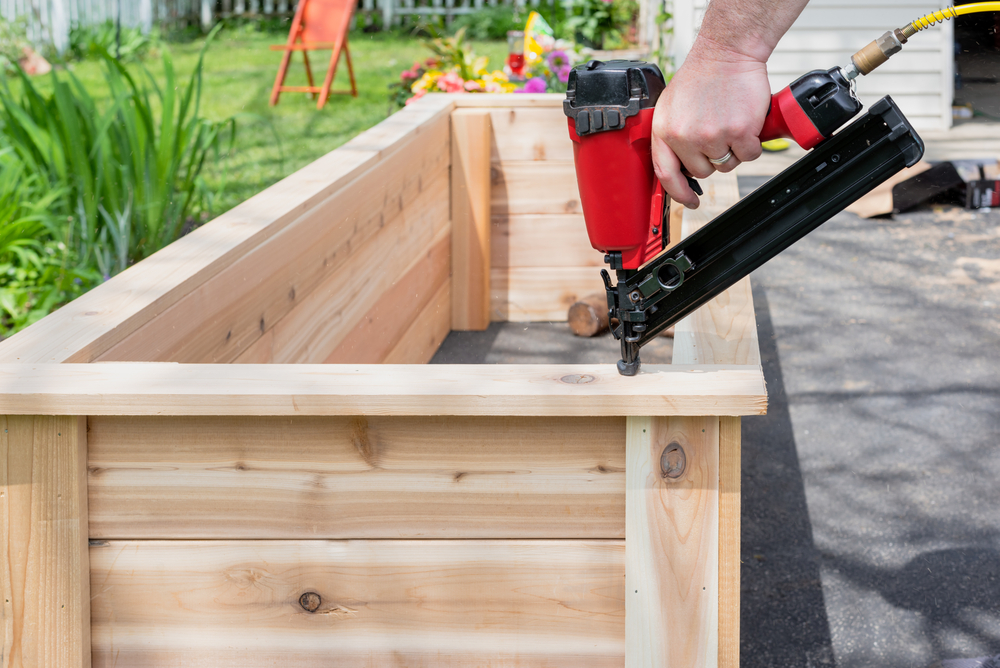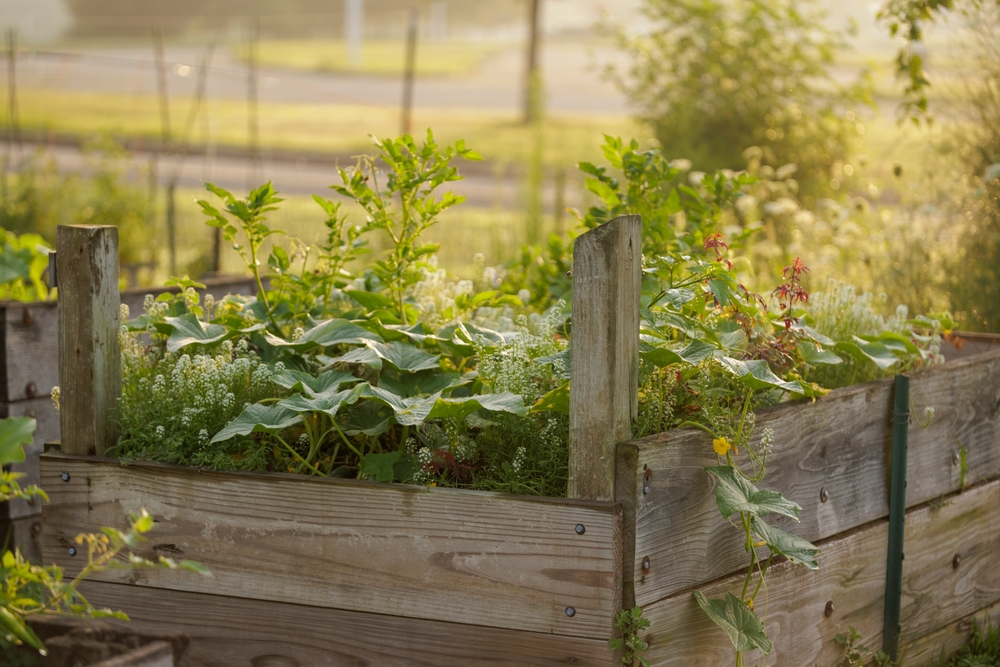
Image Source: Shutterstock.com
The air’s getting crisper, the leaves are turning, and your raised garden beds are starting to look… well, a little tired. Fall is that golden window when the growing season slows down, giving you the perfect chance to whip those beds back into shape before winter.
Ignore them now, and you’ll pay for it come spring with compacted soil, sneaky pests, and sad-looking seedlings. But show your beds a little TLC? You’ll be rewarded with rich, crumbly soil and fewer headaches later. Let’s dig into seven ridiculously easy raised bed fixes that will make fall maintenance feel less like a chore and more like a victory lap.
1. Refresh That Soil Like a Pro
After a long summer of growth, your soil is probably exhausted. Fall is the best time to replenish all the nutrients your plants gobbled up over the season. Start by scooping out any lingering roots or weeds, then mix in compost, aged manure, or leaf mold. These organic materials boost your soil’s texture and add the nutrients it needs for next spring. Think of it as giving your raised bed a multivitamin after a long marathon—it deserves it!
2. Fix Sagging or Warped Boards
Even the sturdiest raised beds can start to lean or bow after a few seasons of battling sun, rain, and roots. Don’t panic—it’s an easy fix! Grab a few screws, brackets, or wooden stakes to reinforce weak spots. Tighten the corners, replace cracked boards, and seal any gaps with weatherproof sealant. Not only will this keep your bed looking sharp, but it also prevents soil erosion and keeps your plants’ roots safely contained.
3. Evict Pests Before Winter
Fall is when sneaky pests like slugs, earwigs, and root maggots start planning their cozy winter hideouts. Don’t let them make your raised beds their holiday home! Pull out dead plants, rake away debris, and turn the top few inches of soil to expose any lurking bugs. You can also sprinkle in some diatomaceous earth or lay down a light mulch barrier to deter them. It’s the equivalent of putting up a “No Vacancy” sign for garden freeloaders.
4. Check Drainage and Soil Levels
Good drainage is key for raised beds, especially during the soggy months ahead. Over time, soil compacts and settles, reducing airflow and water movement. Before winter hits, make sure your bed isn’t holding too much moisture by doing a quick hose test—water should drain evenly, not pool at the surface. If needed, add a few inches of fresh soil or coarse compost to bring levels back up. Think of this as fluffing the pillows before your garden takes its long winter nap.
5. Add a Layer of Mulch or Cover Crops
A layer of mulch in the fall is like tucking your soil in with a warm blanket. It protects from erosion, prevents weeds, and helps maintain consistent moisture levels through temperature swings. You can use shredded leaves, straw, or even wood chips—just make sure the layer is two to three inches thick. Alternatively, try planting cover crops like clover, winter rye, or peas to naturally enrich the soil. Either way, your garden will thank you with healthier, more nutrient-rich earth in the spring.
6. Clean and Store Garden Tools Properly
Your tools worked hard all season—give them some love before packing them away. Wash off soil and sap, sharpen blades, and wipe metal parts with a light coat of oil to prevent rust. If you’ve been guilty of leaving your trowel out in the rain (we’ve all done it), fall is the time to reform. Clean tools last longer and make your next planting season so much smoother. Plus, it feels pretty satisfying to see everything neatly stored and ready for action come springtime.
7. Plan Ahead for Next Year
Fall maintenance isn’t just about cleanup—it’s also your chance to strategize for next season. Take note of what thrived and what fizzled out this year. Did your tomatoes struggle in that corner? Maybe it’s time to rotate crops or adjust sun exposure. Sketch out ideas for new plant combinations, trellis placements, or even an irrigation upgrade. Planning now means you’ll be ready to hit the ground running when the first warm days of spring roll around.

Image Source: Shutterstock.com
Tidy Beds, Happy Gardens
Fall might seem like the end of the gardening season, but it’s actually your secret weapon for a stronger start next year. With a few quick fixes—refreshing soil, reinforcing boards, evicting pests, and prepping for spring—you set the stage for success. A little effort now saves hours of frustration later, and your plants (and your future self) will be forever grateful.
How do you prepare your raised beds for the cold months ahead? Share your fall maintenance tricks, stories, or gardening mishaps in the comments below.
You May Also Like…
Why Your Raised Beds Might Be Working Against You
Why Covering Beds Helps Soil Microbes Thrive
10 Crops to Harvest Twice if You Plant Them in Fall
7 Composting Tricks That Only Work in Autumn
7 Low-Maintenance Flowers That Thrive With Little Water
Leave a Reply